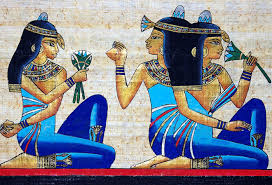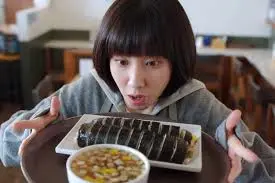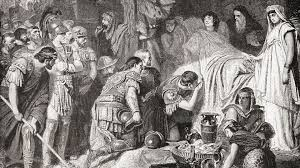Role of Women in Ancient Egypt, a civilization that thrived for thousands of years along the fertile banks of the Nile, has long fascinated historians and archaeologists. While much of the focus often falls on pharaohs and monumental architecture, the role of women in this society is equally captivating. Women in ancient Egypt enjoyed rights and opportunities that were remarkably advanced for their time, making their lives an intriguing subject of study. Let’s delve into the multifaceted roles women played in this fascinating civilization.
Women’s Legal Rights in Ancient Egypt

Equal Standing in Legal Matters
Unlike many ancient societies, women in Egypt had a legal standing comparable to men. They could own property, inherit wealth, and even initiate divorce. This level of autonomy was rare and highlights the progressive nature of Egyptian society.
Contracts and Business Ventures
Women were free to engage in legal contracts, whether for marriage, land ownership, or business dealings. For instance, papyrus documents show women leasing land, lending money, and managing estates.
The Role of Women in the Family
Mothers and Matriarchs
In ancient Egypt, the mother held a central role in the household. She was not only a caregiver but also a key decision-maker. Family lineage was often traced through the mother, emphasizing her importance.
Marriage Practices
Marriage in ancient Egypt was seen as a practical arrangement rather than a formal ceremony. Women brought dowries into marriage, which remained their property even if the union dissolved. This ensured financial security and independence.
Women in Religion
Priestesses of the Gods
Women could serve as priestesses, a highly respected role. They participated in temple rituals, particularly those dedicated to goddesses like Hathor and Isis. Priestesses often held titles such as “God’s Wife” or “Chantress of Amun,” signifying their religious significance.
Female Deities and Symbolism
The prominence of goddesses in Egyptian mythology reflects the cultural reverence for women. Deities like Isis, Hathor, and Ma’at embodied ideals of motherhood, love, and justice, influencing societal views on women.
Women in Politics
Female Pharaohs
While male pharaohs dominated the throne, women occasionally ruled Egypt. Hatshepsut, one of the most famous female pharaohs, reigned successfully for over two decades, showcasing the capability of women in leadership.
Queen Consorts and Regents
Queens often wielded significant influence as consorts and regents. Nefertiti, for example, was known for her political and religious contributions alongside her husband, Akhenaten.
Women’s Work and Occupations
Agricultural Roles
Women participated in agricultural work, including planting and harvesting crops. Their labor was crucial to sustaining the economy and feeding the population.
Craftswomen and Artisans
Many women worked as weavers, potters, and craftswomen. These skilled trades provided them with economic independence and social respect.
Professional Roles
Women could also be physicians, midwives, and scribes. Merit Ptah, for instance, is one of the earliest recorded female doctors in history.
Women’s Fashion and Beauty
Clothing and Adornments
Ancient Egyptian women’s clothing was typically made from linen and styled for comfort in the hot climate. Jewelry and cosmetics were not merely decorative but also held symbolic and protective significance.
Hair and Wigs
Elaborate hairstyles and wigs were popular among Egyptian women. They used oils and perfumes to maintain their hair and skin, emphasizing personal grooming and beauty.
Education for Women
Literacy and Learning
While education was not universally accessible, daughters of elite families often received formal instruction. They learned to read, write, and manage household finances, equipping them for leadership roles.
Informal Knowledge
For most women, education was informal, passed down through generations. Skills such as weaving, cooking, and child-rearing were taught within the family.
Women in Art and Literature
Representation in Art
Women were frequently depicted in Egyptian art, often shown alongside their families or engaged in religious rituals. These portrayals emphasized their roles as mothers, wives, and priestesses.
Female Authors
Though rare, some women contributed to Egyptian literature. Their works provide valuable insights into their thoughts, emotions, and societal roles.
Challenges Faced by Women
Social Inequalities
Despite their rights, women in ancient Egypt still faced societal constraints. Men often held higher-ranking positions, and social mobility was limited for lower-class women.
Physical Labor
Many women, especially those from lower social classes, endured physically demanding labor in agriculture and domestic work. Their contributions, however, were essential to the survival of the household and economy.
The Influence of Women in Medicine
Healers and Midwives
Women often served as healers and midwives, using herbal remedies and traditional practices. Their medical knowledge was invaluable in childbirth and community health.
Physicians
Some women achieved prominence as physicians, a testament to their intellectual capabilities. These roles were respected and essential in society.
Women and the Economy
Economic Independence
Women’s ability to own property and run businesses allowed them a degree of financial independence. They could amass wealth and pass it on to their children.
Market Traders
Women frequently worked as traders in local markets, selling goods like bread, beer, and textiles. Their entrepreneurial spirit was vital to the economy.
Legacy of Women in Ancient Egypt
Inspiring Modern Feminism
The rights and roles of women in ancient Egypt continue to inspire modern discussions on gender equality. Their legacy reminds us of the importance of acknowledging women’s contributions throughout history.
Preservation of Knowledge
Artifacts, writings, and monuments dedicated to women preserve their stories, ensuring that their impact on Egyptian civilization is not forgotten.
Conclusion
Women in ancient Egypt were not mere bystanders but active participants in shaping their society. From their roles as mothers and priestesses to queens and artisans, their contributions were diverse and significant. While challenges existed, the rights and opportunities they enjoyed were unparalleled in the ancient world. The story of women in ancient Egypt serves as a powerful reminder of their enduring influence and importance.
FAQs
1. Did women in ancient Egypt have the right to own property?
Yes, women in ancient Egypt could own, inherit, and manage property independently, making them unique compared to women in other ancient civilizations.
2. Were there any famous female rulers in ancient Egypt?
Yes, Hatshepsut and Cleopatra are two notable examples of women who ruled as pharaohs, showcasing their leadership abilities.
3. What roles did women play in religion?
Women served as priestesses and were deeply involved in religious rituals. They often held titles that signified their importance in temple worship.
4. How were women’s contributions depicted in art?
Women were commonly portrayed in art alongside their families or performing religious duties, emphasizing their societal roles and significance.
5. Were women educated in ancient Egypt?
Education was primarily accessible to elite women, who learned skills like reading, writing, and managing finances. Most women received informal training in practical household skills.


